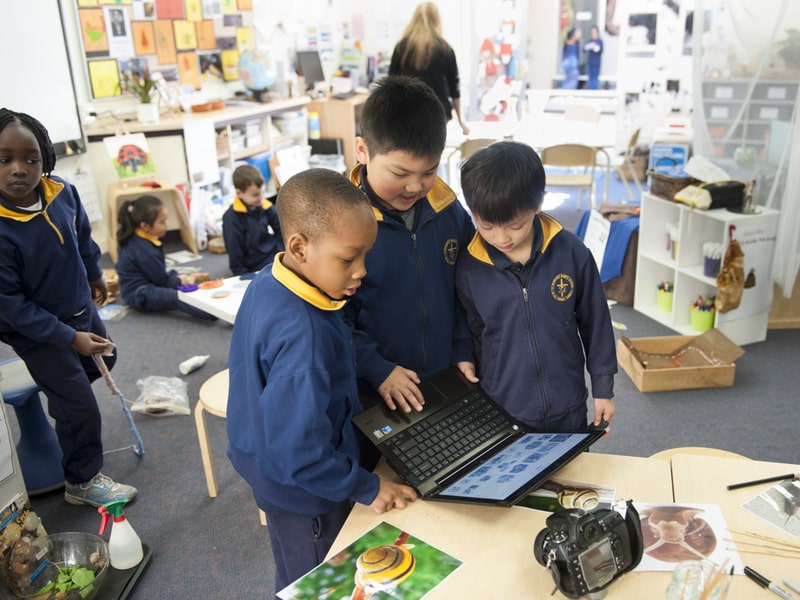
Information technology in education
The emergence of new technologies in our daily lives has meant that we are beginning to include the use of ICTs in different areas of our society. In recent years, ICT has become very important in our environment, having a wide variety of applications in different sectors such as entertainment, administration, robotics, education and all kinds of businesses.
In this article we want to analyse the impact of the use of ICT in schools and to do so we will start by better understanding the term.
What are ICTs?
ICTs is the abbreviation for Information and Communication Technologies. These are all the resources, programs or tools that we can use today to manage, process and share information through numerous technological supports such as televisions, mobile phones, tablets, computers, radios, players, internet, etc.
In our society the role of ICT is crucial because they are responsible for offering many services that we find essential today: the possibility of searching for information, sending an email, downloading data online, having entertainment, trading electronically, etc. And this has led to the introduction of ICTs in very different areas of our existence, including education.
What can ICT offer at school?
In a culture where the use of ICT is so widespread, classrooms are also a good place to take advantage of what they can give us and to teach children and young people how to use them consciously and safely.
The educational field has the responsibility to introduce all technologies that can favour the learning of students, as well as help them to learn to master them in a world where they are already part of professional life and their social environment.
Advantages of using ICT in the classroom
Implementing learning tools based on ICT can bring many advantages in the educational field, making the learning process more dynamic.
- They offer the possibility of creating content adapted to the needs and interests of each student. This is also a powerful tool that allows learning to be adapted to students with special needs.
- They make it possible to learn in a more attractive and enjoyable way, more active than traditional methods.
- The comprehension and interest of the students is favoured by the availability of very varied resources such as animations, audiovisual material, graphics, interactive programs, multimedia tools that reinforce the understanding of the students.
- They increase the dynamism of the class because the student can interact, create resources, communicate and exchange experiences, going from being a mere receiver to an active participant in the dynamics of the classroom.
- They encourage networking by offering numerous tools that enhance collaborative learning and communication.
- They help to develop the autonomy of the students by having different channels to look for information, promoting self-learning.
- It removes the barriers of space and time between teacher and student, allowing the learning experience to continue outside the classroom, in daily life.

Challenges or potential pitfalls of ICT use in schools
However, the use of ICT in education is not without its challenges, which must be taken into account in order to overcome them.
- They can help to distract students, who can jump from one content to another on the Internet, letting themselves be carried away by what they find most appealing, especially by playful content that is far from the academic objectives.
- There is also data on the growing addiction of children and young people to new technologies, which makes it essential that their use be accompanied by training in how to do so responsibly.
- Sometimes it is complicated on the Internet to know which information is correct or which sources are the most reliable. It is the teacher’s task to help the student look for information with a critical spirit and learn to discern what is really reliable and useful for the subject.
- They can be detrimental to the development of social skills needed for other types of communication that are indispensable for the social development of the student, such as face-to-face communication, because they favour isolation and individualism.
In conclusion, the use of ICT in the classroom can offer attractive possibilities for enriching the educational environment, but it is important to take into account the challenges they bring with them in order to implement them intelligently.
